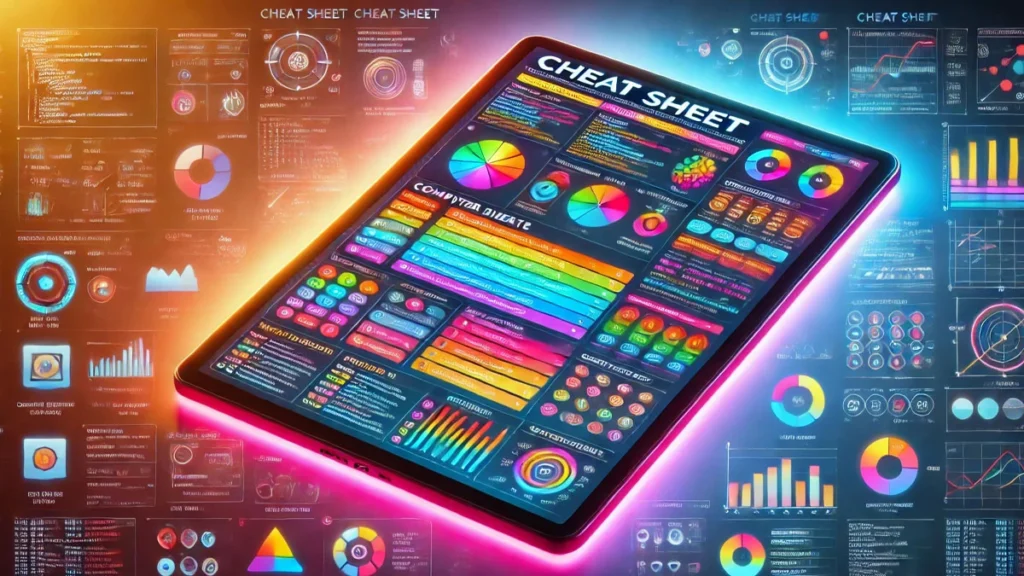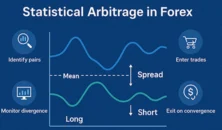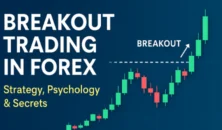Welcome to Forex Basics
This forex cheatsheet is your go-to guide for understanding the essentials of Forex trading. Use the search box below to find specific topics quickly!
The forex market is where currencies are traded. It is the largest financial market in the world.
Example: Trading USD for EUR (USD/EUR).
Pairs involving USD: EUR/USD, GBP/USD, USD/JPY, USD/CHF.
Example: EUR/USD = Euro vs. US Dollar.
Pairs without USD: EUR/GBP, EUR/AUD, GBP/JPY.
Example: Often called cross-currency pairs.
One major currency + one emerging market currency: USD/TRY, USD/SEK.
Example: Higher risk due to volatility.
Tokyo: 12 AM–9 AM GMT
London: 8 AM–5 PM GMT
New York: 1 PM–10 PM GMT
Bid: Price to sell currency. Ask: Price to buy currency.
Example: EUR/USD = 1.1050 (Bid) / 1.1052 (Ask).
Difference between bid and ask prices. Spread = Ask – Bid.
Example: 1.1052 – 1.1050 = 0.0002 (2 pips).
A pip is the smallest price move in forex trading.
Example: In EUR/USD: 0.0001. In USD/JPY: 0.01.
Borrowing funds to increase position size.
Example: 1:100 leverage means $1 controls $100 worth of currency.
Standard Lot = 100,000 (1.00 Lot) units. Mini Lot = 10,000 (0.10 Lot) units. Micro Lot = 1,000 units (0.01 Lot).
Example: Trade size determines potential profit/loss.
Common platforms: MetaTrader 4 (MT4), MetaTrader 5 (MT5), cTrader.
Example: Choose a platform with technical tools, ease of use, and reliability.
Market Order: Executes at current price
Limit Order: Executes at a specified price
Stop Order: Executes after a price is reached
Example:
Buy Stop: If Last Price breaks above an specific price it open Buy position
Buy Limit: If Last Price Break below an specific price it will open a Buy position
Sell Stop: If Last Price breaks below an specific price it open Sell position
Sell Limit: If Last Price Break above an specific price it will open a Sell position
Risk no more than 1-2% of your account per trade. Use stop-loss orders to protect your trades.
Mathematical Calculations to identify Market Condition
Example:
MA : Moving Average
RSI: Identifies overbought/oversold conditions.
MACD: Measures trend momentum.
The Style of Analyzing the market
Example:
Technical : Price Action , Technical Classic , Elliot waves
Order Flow : ICT , Smart Money
Fundamental : Economic events and news
Sentiment : Market Mood
Example:
Non-Farm Payroll (NFP)
Interest rate decisions
GDP reports
Example:
USD: Greenback
GBP: Cable
EUR: Fiber
AUD: Aussie
Price difference between expected and actual execution.
Example: Often occurs during high volatility (e.g., news events).
Margin: Capital needed to open a trade. Margin Call: Broker demands more funds to maintain a position.
Note: Avoid over-leveraging.
Scalping: Short-term trades.
Day Trading: No overnight trades.
Swing Trading: Hold trades for days.
Practice with virtual funds before trading live.
Test strategies without risk.
Over-leveraging, not using stop-loss, ignoring risk management.
Note: Learn from small losses to avoid big ones.
Research broker reliability, fees, spreads, and regulations.
Note: Check for licenses with entities like FCA or ASIC.
About Forex Cheatsheet
The Forex Beginner’s Cheatsheet is a comprehensive, user-friendly guide covering essential forex trading topics, strategies, and tips








